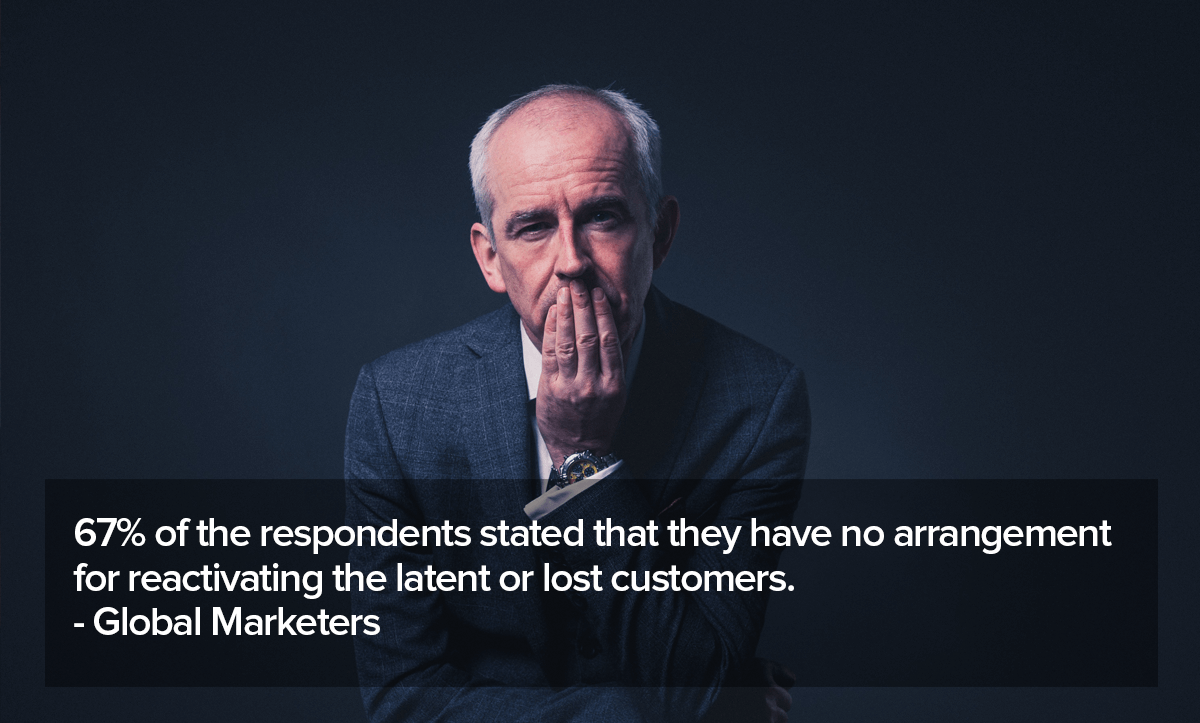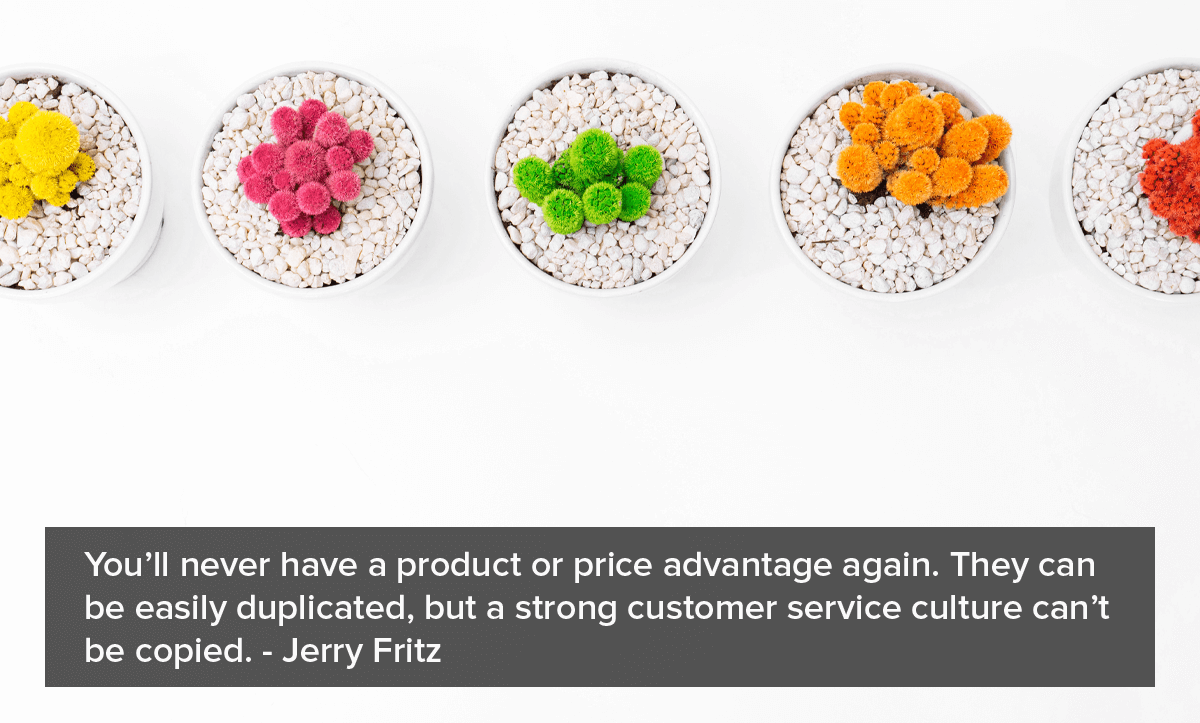7 Ways to Cut Down Your Customer Churn Rate

Indhuja Lal
Last Updated: 31 March 2024
14 min read

Customer churn, or attrition, is the percentage of customers who stop doing business with a brand or service over a specific timeframe. You might be constantly acquiring new users, but if the existing ones are leaving faster, you might be on the verge of stagnation!
This is why reducing your customer churn rate and taking essential measures to steer forward toward sustainable growth is important.
Worry not! We will deal with the definition, importance, meaning, and unique ways to cut down the leakage!
Off we go!
Why don’t we start with the basics?
What is Customer Churn?
Imagine you built an amazing product that was loved by the audience. But slowly, your customers vanish like sand slipping off your fingers! This is customer churn.
Now, let’s look at it from the user’s point of view. Have you ever subscribed to a plan with high hopes? But gradually, you decide to abandon it a few months later? Again, that’s attrition in action!
Definition:
Customer Churn refers to the percentage of customers who cease doing business with a company within a given timeframe. It’s a key metric that reflects a company’s customer base’s health and ability to retain existing customers.
A high churn rate indicates a struggle to retain value. It directly impacts growth and profitability.
While it affects future revenue, attrition also impacts brand reputation. Understanding and addressing customer churn is crucial for sustainable business growth.
Now, let’s move on to some numbers…
How to Calculate Customer Churn Rate
The size of the business does not matter. Churn is something everyone should prevent. Calculating the rate, predicting future churn, and taking measures to improve customer experience is important.
Customer Churn Rate (%) = (Lost Customers / Total Customers at Start of Period) x 100
Let’s break it down:
- Lost Customer: This refers to those who stopped associating themselves with you over a specific timeframe. This could include cancellations, expired subscriptions, or customers who haven’t made a purchase in a set period.
- Total Customers at Start of Period: This is the number of users you had at the beginning of the chosen time frame. It’s important to use active customers, not total signups, as inactive accounts don’t contribute to churn.
Example of Churn Rate
Let’s say you have a subscription service and want to calculate your monthly churn rate. In January, you started with 1,000 active customers. By the end of the month, you lost 20 customers who canceled their subscriptions.
Here’s how to calculate your churn rate:
- Lost Customers: 20
- Total Customers at Start of Period: 1,000Churn Rate (%) = (20 / 1,000) x 100 = 2%
Therefore, your customer churn rate for January is 2%. That month, you lost 2% of your active customer base.
Remember:
1. You can adjust the timeframe in the formula to calculate the churn rate for weeks, quarters, or even a year.
2. The churn rate is typically expressed as a percentage.
Here’s a sample customer churn survey you can use to identify the reasons for attrition.
Churn Survey Template
Use This TemplateWhy is it Vital to Monitor Your Customer Churn Rate?
Though piling up new subscribers to your services is a delightful win, many businesses often overlook the importance of keeping the acquired customers hooked to them.
A high customer churn rate crushes the soul of your enterprise, your revenue. It’s like a leak in the bucket. Even the smallest hole can drain it dry if left unattended. Gaining a new customer for your company can cost you five to twenty-five times more than retaining an acquired customer.
And to make matters worse than they are, you’re not just wasting money on lead acquisitions but also losing profits. According to research from Bain and Company, a 5% increase in customer retention rates can increase profits by 25-95%.

Chiseling down the customer churn rate to as small as possible should always be your priority. According to Global marketers, Customer churn rate impacts:
- Revenue loss impacts Business performance by 59%
- Profitability is reduced up to 39%
- And re-acquisition costs by 36%
For any company to succeed,
- Customer acquisition cost must be less than the customer’s lifetime value, which is the amount he or she pays throughout his or her time as a customer in your company.
- If it’s otherwise, customers end up costing you rather than contributing to profit. Lowering acquisition often lessens the burden, but reducing customer churn rate is also vital, as the standing customers would stick around and end up paying subscription fees, securing their loyalty for a while.
Though it’s usually impossible to foresee customer churn rate, you can uncover some correlations amongst churned customer demographics and patterns that would give you a clearer idea.
A recent survey by Gartner states that even though 90 percent of companies track their customers’ behaviors, only 5 percent put it to use.
How to Reduce Customer Churn: 7 Strategies
1. Identify Your Strengths and Weaknesses
As you discover the reasons for customer churn rate through various qualitative and quantitative methods, you create a list to ensure you don’t repeat them.
For that,
- You could list customer accounts you lost and collect information on why they wanted to leave. Why? So that you can build systematic strategies and processes to evade such situations in the future.
- By conducting a peer-editing process, identify if you are giving any avoidable causes for churn. Reviewing all your strategies could uncover some of the potential long-term adverse effects.
Identifying the reasons that enable you to keep your customers loyal would be the key to profitable customer retention and major growth. You are doing something right- uncover those and then leverage them across the customer base. These could be the initial offering or educational material that you are providing.
2. Keep An Eye On Your Competitors
Alright, let’s put it in simple terms.
What happens to the customers that you are losing?? Where do they go??
Look under your competitors’ cap. They would be there. The customer churn you are experiencing often has nothing to do with you but everything to do with your competitors’ strategies.
- Constantly monitor your competitors closely. Know your enemy!! If you look out for the tactics and customer engagement programs they implement, you will always have an advantage over them. You can also evade an accidental opportunity that would cause your customer to leave you.
Now, this doesn’t mean you have to follow the wagon blindly. However,
- It would be wise to upgrade your product and services to match up. To ensure you aren’t getting lapped by your competitors, make note of their customer success programs.
- Do they have a chat-enabled website? Or are they engaging in social media? Taking hints from their policies can help you better serve your customers and retain customer loyalty.

3. Build Them Loyal
Customer loyalty is one of those things that are priceless in business. And Why? You ask. Let’s admit it: you are going to disappoint your customers once in a while. You are going to screw up one or two things. And loyalty would fly in and sweep you off into safety.
It buys you some buffer room with the customer. Once a customer feels loyal to your company, flight risk decreases significantly. And it doesn’t just stop with that. You can increase your profit by 25% with a 5% increase in customer loyalty.
Loyalty programs would cultivate a feeling of oneness and a positive and forgiving attitude toward your company.
- You could reward your loyal customers to let them know they are appreciated and matter. Everybody loves personalized gifts.
- These programs would help you plan strategies to make customers feel you have made it just for them. Even personalizing their emails by addressing them by name or sending greetings on special occasions would be enough.
4. Be There Always
Some customers leave merely because they’re indifferent and have no problems wiggling out of a relationship. Some like to flit from one place to another.
If you can’t transform indifference into satisfaction (or even better – reliance on your product), at least make it difficult for your customers to leave you.
If they can end it with a button, you are making it easier for them, not to say you never get to know the reason for their departure, too. Give yourself a last chance by requesting the leaving customer to have a verbal conversation with you where you can give them reasons to stay.
If you can’t persuade them, take it as an exit interview and give yourself a chance to learn from the situation.
5. Find Strength Within

Be it happiness or growth, it should happen from within!
A strong core is essential to developing and achieving goals in any organization. When companies lose money, they usually try to compensate by laying off their employees.
This is one of the biggest reasons for a high customer churn rate. Your employees see those types of reactions as thankless and depressing. This makes them discourteous, leading to a bitter opinion about the company.
It’s pertinent to bring in additional training sessions to ensure they understand the fundamentals and acquire more skills to increase employee engagement.
Having loyal employees is as vital as building loyal customers.
6. Keeping the Spark Alive
When you have plans that lock customers in for six months or even a year, it would be hard to measure customer satisfaction based on Customer churn rates alone.
- Customers often let issues fester rather than relying on your customer support team for help. Frustration, which ultimately leads to churn, occurs when there is no clarity about a product or service, and sometimes, it surfaces when there is a lack of an efficient support team.
- You should conduct customer feedback surveys regularly to get insights into your customers and how well they cope with your products and services.
Be Proactive!!
Check-in with your customers regularly. See if they have any suggestions for you. Time-stamped feedback would guide you to where their loyalty starts to wane. If you have a consistent feedback system, you can catch and resolve issues that might lead to customer churning before it escalates.
Pro Tip!
Rolling out Surveys regularly is a great way to keep your audience engaged. Not just any surveys but conversational ones. Try SurveySparrow. Chat-like surveys have a 40% higher response rate and are easy to create! You can use the drag-and-drop form builder to create ones from scratch, take help from AI, or use any of the 1000+ pre-designed customizable survey templates.
Once you create, share them via multiple platforms, collect data, visualize them on the executive dashboard, and make informed decisions!
Why don’t you try SurveySparrow out today? Sign up for free!
Create conversational surveys with SurveySparrow
Get 40% more responses
14-Day-Free Trial • Cancel Anytime • No Credit Card Required • Need a Demo?
7. Create (and Automate) a Retention Process
You identify key moments, even without knowing when a customer cuts ties with a company. You can always create a retention program that focuses on these key periods.
You could use customer engagement methods such as nurture emails, customer surveys, special offers, and personal touches to remind them of you and how they cannot just leave you.
You have to design it to go off as a natural process. You should be careful not to smother your customers with attention, placing you in the spam folder.
- Automate sending the remainder of the mail when an inactivity is found in a customer’s account.
- Make sure to throw in a reward or coupon they can avail as bait to hook them back in.
- Send a friendly nudge when a customer has signed up but has not used the offer.
Pros of Calculating Customer Churn Rate
- Predict Issues: They act as early warning systems. A high churn rate can signal underlying problems like poor customer service, product dissatisfaction, or pricing issues. By identifying them, you can act upon the issues effectively.
- Predict Future Growth: Churn directly impacts your customer base size, affecting future revenue potential. By understanding the rate, you can create more accurate forecasts.
- Benchmark: It acts as a benchmark against competitors. It will tell you if you’re performing well or need improvement.
Cons of Calculating Churn Rate
- Customer Segments: Each customer is different. You cannot generalize churn. A high churn rate for a segment, let’s say free trail users, might not be as alarming as a high rate for your most valuable customers (e.g., annual subscribers).
- New Customer Acquisition Rate: CCR is only half of the story. A high churn rate might be offset by a high customer acquisition rate, leading to overall growth.
Wrap Up!!!
Customer churn is not something that you can permanently hide or evade from. It is quite natural and doesn’t imply that your company is incompetent or a flight risk.
All the steps above will help you keep your Customer Churn rates low. Remember that not every customer will stay. However, the perceptiveness you gain while going through these steps would help keep the next customer on board. Churn is part of any business.
The key is to use your churned and loyal customers to foresee signs of satisfaction and dissatisfaction so that you can take the necessary steps to retain the relationship before they leave.
FAQs
1. What is good churn and bad churn?
Good churn occurs when customers naturally outgrow a product, while bad churn results from preventable issues like dissatisfaction or poor service. Focusing on reducing bad churn is essential for long-term business success.
2. How often should I calculate the churn rate?
The frequency depends on your business cycle and customer behavior. A monthly churn rate is a common choice, especially for subscription businesses. However, you might want to calculate it weekly for services with very short subscription cycles or quarterly for companies with longer customer lifespans.

Indhuja Lal
A dilettante bohemian soul mesmerized with the magic of words, sworn to be unpredictable, and spellbound with the simplicity of humanity...
Product Marketer at SurveySparrow

Turn every feedback into a growth opportunity
14-day free trial • Cancel Anytime • No Credit Card Required • Need a Demo?




